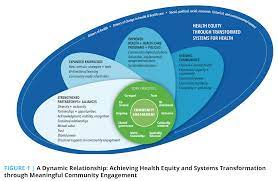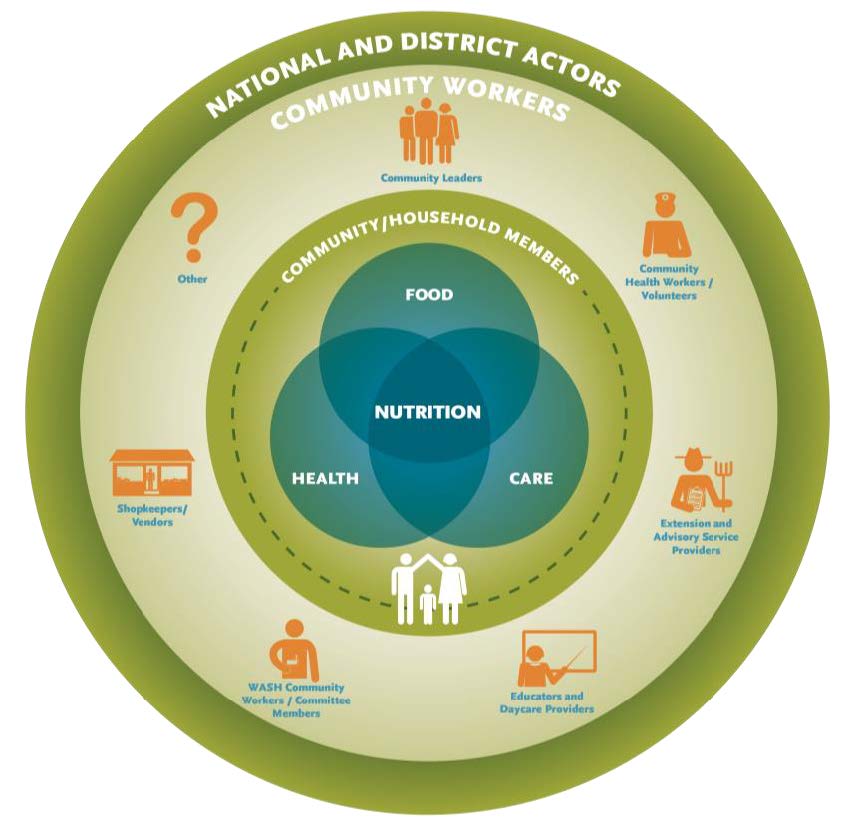Health and community engagement strategies, In our ever-evolving world, the importance of community engagement in promoting health and well-being cannot be overstated. Communities are the backbone of society, and when individuals come together to actively participate in initiatives that promote health, the impact can be truly transformative. This blog aims to explore the critical link between community engagement and health, focusing on effective strategies that enhance community involvement and improve overall health outcomes. This blog will delve into various strategies that foster community engagement, aiming to create a healthier and more vibrant community.
Understanding the Role of Community Engagement in Health:
A. Definition and Significance of Community Engagement:
Community engagement refers to the active involvement of community members, organizations, and stakeholders in addressing health-related issues. It goes beyond passive participation and encourages individuals to contribute their knowledge, skills, and resources to create healthier communities.
B. Benefits of Community Engagement on Individual and Community Health:
When community members actively engage in health initiatives, several benefits emerge. Firstly, it promotes a sense of belonging and social cohesion, which are essential for overall well-being. Engaged individuals are more likely to adopt healthier behaviors, such as regular exercise, balanced nutrition, and preventive care.
C. Examples of Successful Community Engagement Initiatives and Their Impact:
Numerous community engagement initiatives have yielded remarkable results in improving health outcomes. For instance, community-led campaigns focused on reducing smoking rates have contributed to a significant decline in tobacco use. Similarly, grassroots organizations tackling food insecurity have increased access to nutritious food, improving the overall health of vulnerable populations.
Health and Community Needs Assessment:
A. Conducting a Comprehensive Community Needs Assessment:
To effectively address health challenges within a community, a comprehensive needs assessment is crucial. This process involves gathering data, engaging with community members, and identifying the key health issues and concerns. By understanding the unique needs of the community, healthcare providers, organizations.
B. Identifying Key Health Issues and Concerns within the Community:
During the needs assessment, it is essential to identify the specific health issues and concerns prevalent in the community. These may include chronic diseases, mental health issues, lack of access to healthcare services, or environmental factors impacting health.
C. Involving Community Members in the Assessment Process:
Active involvement of community members in the needs assessment process is vital for its success. Engaging community leaders, local organizations, and individuals from diverse backgrounds ensures that the assessment captures a comprehensive and accurate picture of the community’s health landscape.
Collaboration and Partnerships:
A. Importance of Collaboration with Local Organizations and Stakeholders:
Collaboration with local organizations, stakeholders, and healthcare providers is a key aspect of effective community engagement. By working together, resources can be pooled, expertise shared, and a collective impact achieved. Collaborations foster a sense of unity and amplify the reach and effectiveness of health initiatives.
B. Strategies for Building Strong Partnerships to Address Health Challenges:
Building strong partnerships requires a deliberate and strategic approach. It begins by identifying potential partners with aligned missions and shared goals. Open and transparent communication, mutual respect, and active participation are essential for cultivating successful collaborations.
C. Examples of Successful Collaborations in Promoting Community Health:
Many inspiring examples demonstrate the power of collaboration in promoting community health. For instance, partnerships between healthcare providers, community organizations, and schools have led to comprehensive school health programs, integrating education, physical activity, and nutritious food options.
Empowering and Educating Community Members:
A. Developing Health Literacy Programs for Community Members:
Health literacy plays a pivotal role in empowering individuals to make informed decisions about their health. Community engagement strategies should include the development of health literacy programs that equip community members with essential knowledge and skills.
B. Engaging Community Members through Workshops, Seminars, and Training Sessions:
Workshops, seminars, and training sessions provide opportunities for community members to actively engage and learn about health-related topics. These interactive sessions can cover a wide range of subjects, such as healthy cooking, physical activity, mental health awareness, and self-care.
C. Utilizing Technology and Social Media for Health Education and Awareness:
In today’s digital age, leveraging technology and social media platforms can greatly enhance health education and awareness efforts. Online resources, mobile applications, and social media campaigns can reach a wider audience, particularly younger community members.
Community-Based Health Promotion Programs:
A. Designing and Implementing Community-Based Health Programs:
Community-based health programs are designed to engage community members actively, addressing their unique health needs and challenges. These programs should be developed through a collaborative process involving input from community members, healthcare providers, and relevant stakeholders.
B. Tailoring Programs to Meet the Unique Needs of the Community:
No two communities are the same, and effective health programs recognize this diversity. Tailoring interventions to meet the unique needs of the community is essential for maximum impact. This involves understanding the community’s demographics, cultural norms, socioeconomic factors, and health disparities.
C. Evaluating the Effectiveness of Health Promotion Initiatives:
To gauge the success and impact of community-based health programs, evaluation is crucial. It involves measuring predefined indicators, such as changes in health behaviors, health outcomes, and community empowerment. Evaluation methods may include surveys, focus groups, health screenings, and data analysis.
Creating Supportive Environments for Health:
A. Enhancing Access to Healthcare Services within the Community:
Access to quality healthcare services is fundamental to community well-being. Community engagement strategies should aim to improve healthcare access by collaborating with local healthcare providers, advocating for the establishment of health clinics, and expanding telehealth services.
B. Promoting Healthy Lifestyles through Environmental Changes:
Creating supportive environments that promote healthy choices is essential for community well-being. This involves advocating for policies that encourage physical activity, such as the development of parks, walking paths, and bike lanes. Additionally, promoting access to fresh and nutritious foods through community gardens, farmers’ markets.
C. Advocating for Policies that Support Community Health and Well-being:
Policy advocacy is a powerful tool for community engagement in health. By advocating for policies that address social determinants of health, such as affordable housing, equitable education, and clean air and water, communities can create lasting change.
Celebrating Success and Sustaining Community Engagement:
A. Recognizing and Celebrating Achievements in Community Health:
Acknowledging and celebrating successes in community health is crucial for sustaining motivation and engagement. Recognizing the efforts of individuals, organizations, and community leaders not only builds a sense of pride but also inspires others to get involved.
B. Developing Strategies for Long-Term Sustainability of Community Engagement Efforts:
To ensure the long-term sustainability of community engagement efforts, it is essential to develop strategies that go beyond short-term interventions. This may include establishing community health coalitions or task forces, securing funding and resources, and creating partnerships with local businesses, educational institutions, and government agencies.
Conclusion:
Community engagement is the cornerstone of building healthier communities. By implementing community-based health programs, creating supportive environments, and sustaining engagement efforts, we can unlock the transformative potential of community-driven health initiatives. As readers, it is our responsibility to get involved, advocate for change, and prioritize health and community engagement in our own communities. Together, we can build resilient and thriving communities where health and well-being are paramount. more details




